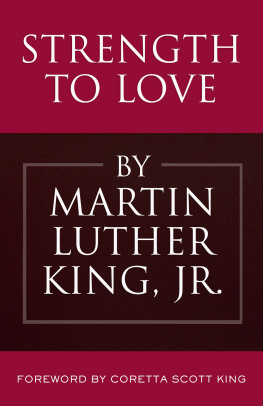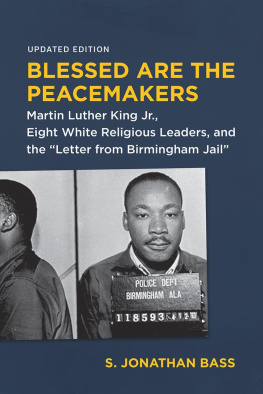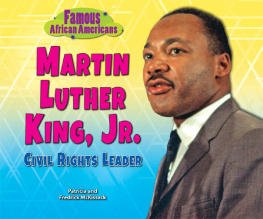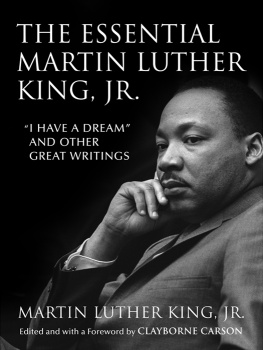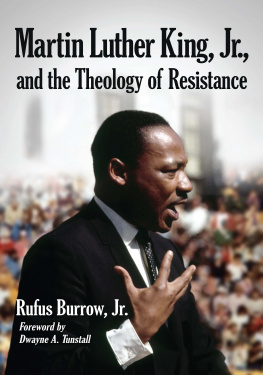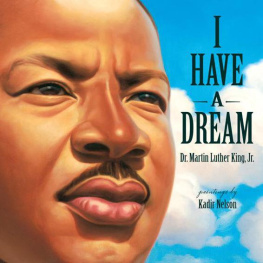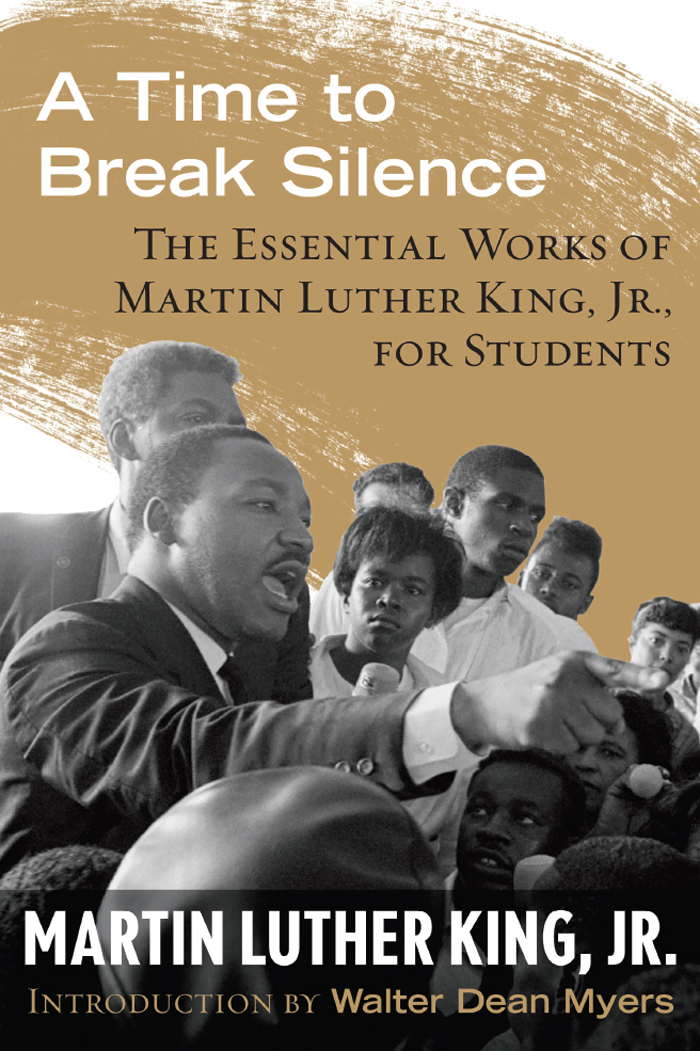
Dr. Martin Luther King, Jr., is shown delivering the commencement address at Tuskegee Institute, Tuskegee, Alabama, May 31, 1965. (AP Photo/Horace Cort)
OTHER BOOKS IN
THE KING LEGACY SERIES
All Labor Has Dignity
A Gift of Love
In a Single Garment of Destiny
Stride Toward Freedom: The Montgomery Story
Thou, Dear God: Prayers That Open Hearts and Spirits
The Trumpet of Conscience
Where Do We Go from Here: Chaos or Community?
Why We Cant Wait

THE ESSENTIAL WORKS OF
MARTIN LUTHER KING, JR.,
FOR STUDENTS
MARTIN LUTHER KING, JR.
INTRODUCTION BY WALTER DEAN MYERS
BEACON PRESS
Boston
Contents
Reflection questions are included after each selection.
Introduction
Martin Luther King, Jr.
I was seventeen in 1955 and a soldier in the United States Army. We had traveled from Massachusetts by train to Fort Polk, Louisiana. It was my first trip to the Deep South. I wasnt sure what to expect. I had heard about segregation, the forced separation of the races, but had only seen it in newspapers and on television. What was going on in Louisiana was a military exercise called Sage Brush. The Army was already involved in military operations in Vietnam, and the swampy terrain in southern Louisiana was considered to be the perfect training ground for continuing what was not yet being called a war overseas. Moreover, the Army wanted to test its new Atomic Cannon, a weapon that would use nuclear ammunition for the first time. The theory was that the new artillery piece could fire nuclear shells that had little radioactive fallout, allowing foot soldiers to occupy the targeted areas and take the territory before an enemy could recover. I didnt know it at the time, but I was about to experience issues that would put our nation into turmoil for the next two decadesand would bring to prominence one of the most dynamic leaders of my lifetime, Dr. Martin Luther King, Jr.
When I arrived in Louisiana, when I saw what institutionalized racism was, I was shocked. Restaurant signs read Whites Only or Colored Served in Rear. Some stores wouldnt serve black people, and there were movie houses in which they were made to sit in the balcony or, in some cases, not even permitted to enter.
Black children couldnt attend the same schools as their white friends and sometimes couldnt even play in the same parks. The signs did more than make me feel uncomfortable; they made me feel sick. I was being told that I wasnt as good as some people simply because of the color of my skin. And yet I was in the military, ready and willing to sacrifice my life for this country. When I boarded a bus I had to sit in the back, where people of my race were forced to sit. It made me feel ashamed to be black. I was told that these were the laws in this part of America, and I had to follow them.
Black people had protested segregation in the past. We had taken our cause to the courts and, for the most part, had been rejected. Most of the decisions had been based on an 1896 Supreme Court case (Plessy v. Ferguson), which stated that the equal protection clause of the Constitution was satisfied as long as the facilities for whites and blacks were equal. But in May 1954, in a stunning decision, the Court declared that segregated schools were unconstitutional. The separate but equal ruling from the earlier decision had finally been reversed. For black people throughout the country, the ruling delivered in 1954 was an occasion for jubilation. We felt that segregation and the humiliation it brought would soon be over. We were wrong.
Although some white people spoke out against the segregated schools and facilities, most Southern leaders resisted the changes that they felt would lead to equality among the races. To many whites, there was definitely a place for blackswho were also referred to at the time as Negroes or colored peoplebut that place was determined by tradition, and by the white race. Blacks understood that the struggle for our share in Americas freedom had to be continued, but how? The Supreme Court had ruled that segregation was unconstitutional, but the resistance was so strong that no changes were being madehow could the Supreme Courts ruling be implemented and segregation actually dismantled? On Thursday, the first day of December 1955, a black woman boarded a bus in Montgomery, Alabama, and sat in the first available seat in the black section. As the bus filled, the white bus driver ordered her to relinquish the seat to a white passenger. Rosa Parks refused to move, and the driver called the police. Mrs. Parks was arrested and charged with breaking the law by refusing to be segregated, and she was ordered to pay a fine.
The issue for Rosa Parks was not simply that she was tired that dayshe wasntor that segregation was embarrassing. A long-time activist, she understood what it meant to be a second-class citizen despite how hard she worked. She knew that black children were not getting the same kind of educational opportunities that white children were.
The National Association for the Advancement of Colored People (NAACP), an organization dedicated to the protection of human rights for black people, had been banned in Montgomery. In its place the Montgomery Improvement Association (MIA) had been formed. After Rosa Parkss arrest they met and decided to use her case to begin a protest against segregation in Montgomery.
Montgomery is a bustling, vital city and the capital of the state of Alabama. As a major Southern city, the rest of the country, it was thought, would certainly pay attention to what was going on there. Still, any protest had its risks. Although one-third of the Montgomery residents were black, they were among the poorest people in the city where the Confederate States of America had been formed in 1861. It was certain that a protest would result in a loss of precious jobs. The MIA wanted to press forward, but who would lead such a protest?
It couldnt be just the person who was angriest. Anger only produced a more violent reaction from authorities, and blacks had been beaten for protesting in the past. Many had even been killed. The leader had to be articulate, someone who could control his or her emotions and who could carry out a plan that would be effective. After considerable discussion, it was thought that a young minister, relatively new to the city, had all the qualifications needed. He was approached with the idea that he could lead a protest but warned that he might be physically injured or arrested, or that his home might be attacked and even his family would share the danger. After consulting with his wife, and asking God for guidance, the young minister accepted the challenge.
Martin Luther King, Jr., was born in Atlanta, Georgia, in 1929. The son of a Baptist minister, he finished high school at sixteen and completed his undergraduate work at Morehouse College in Atlanta before attending Crozer Theological Seminary in Pennsylvania. He then went to Boston University, where he received his doctorate degree, and in 1953, he married Coretta Scott, a student at the New England Conservatory of Music.


